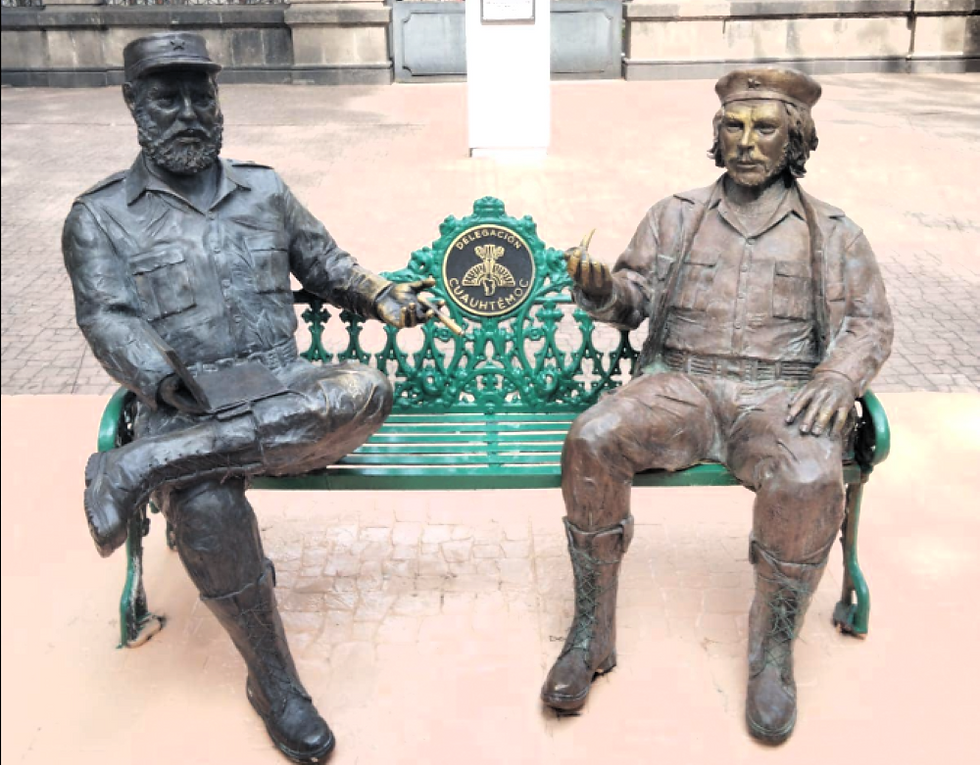Outrage as Mexico City borough removes Fidel and Che monument
- The Left Chapter

- Jul 19
- 2 min read

There is growing outrage in both Mexico and Cuba after the right wing mayor of Mexico City’s Cuauhtémoc borough removed a Fidel Castro and Che Guevara monument from the Tabacalera Garden on July 17. Mayor Alessandra Rojo de la Vega claimed this was being done due to the statue not having the proper permits even though it had been there for years.
The sculpture, part of the Encuentro monument, had been installed back in 2018 and reinstalled in 2020. It is a popular attraction for both tourists and locals.
Following the removal of the sculpture, Mexican President Claudia Sheinbaum, in her regular morning briefing, stated that the mayor's action was wrong.
"Why don't they hand them over and we put them somewhere else?" she asked, urging the government of the capital to organize a relocation, as it is a historical monument related to Mexico.
In a series of posts the Mexican Movement of Solidarity with Cuba denounced the move on X calling it "unilateral and cowardly" and sharing a number of statements regarding it.
The Cuban ambassador to Mexico, Marcos Rodríguez Costa, also weighed in on X noting that the removal will not defeat their ideas:
El Machete , the central organ of the Communist Party of Mexico, published an open letter signed by a number of academics, intellectuals, and artists condemning the move and saying (translated):
Although the Cuauhtémoc City Hall argues that it lacks official permits and hides behind urban planning formalities, it is impossible to separate this act from its political significance. Mayor Alessandra Rojo de la Vega, by ironically declaring that "neither Fidel nor Che Guevara asked for permission to settle," demonstrates a disregard for historical memory and an attitude that borders on institutional censorship.
The sculpture was more than just a decorative piece; it referenced two heroes who spearheaded the Cuban Revolution, a victory that significantly influenced the working classes in Cuba and, consequently, the popular sectors of our nation.
The memory of Fidel and Che embodies insurrection, dignity, and the struggle of the working people; it represents a horizon of transformation toward socialism that lives on in the hearts of the Mexican people. Removing them from public spaces eliminates the chance to remember that an alternative form of organization and society is possible.







Comments